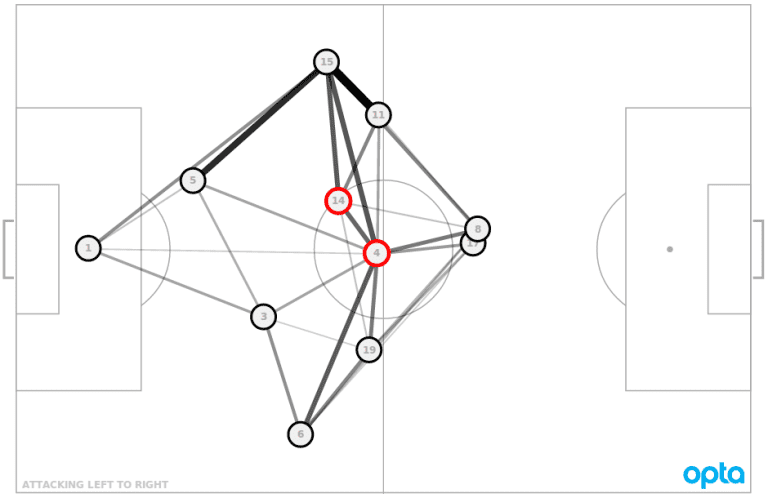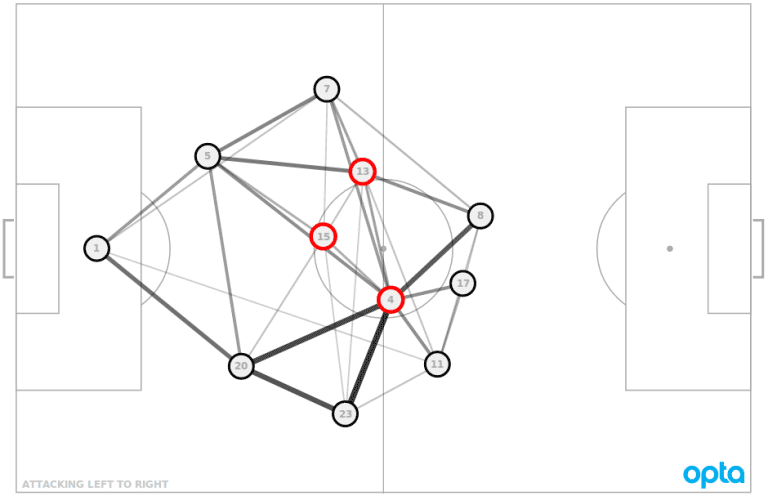Ahead of the final World Cup "tune-up" for the US national team this past Saturday against Nigeria, coach Jurgen Klinsmann played down the effect of the sudden formation change the national team has experienced since the 2-2 draw with Mexico in Arizona on April 2.
Claimed Klinsmann, "It doesn’t really matter what shape we have or what system we have, it matters how we kind of connect with one another on the field." His comments, of course, came in the wake of the USA's sudden usage of, and success with, the "diamond" midfield.
To paraphrase the coach: Formations are too crude for analyzing the modern game. After all, a team's "shape" and "system" do not always imply specific "tactics." In a world where team formation has become increasingly pluralist, team tactics have become – to borrow a term from chess jargon – "sharp."
Games are commonly decided by situations uncharacteristic of the rest of the match, and one team's precision, or sharpness, in those moments can make or break an entire World Cup campaign.
Using other chess parlance, tactics are not considered synonymous with strategy. A "tactic" is a sequence of premeditated movement that exploits an opponent's current shape. A "strategy" is a style of play; and certain strategies cause certain tactical opportunities to present themselves at different frequencies.
The variety, volume and location of tactical opportunities are byproducts of the combined strategies at play in every single match. And while a team's strategy may not shift immensely from game to game, their tactics must. Soccer is the same.
In this chess metaphor, the diamond midfield is a strategy, while Kyle Beckerman dropping deep between his own splitting center backs is a tactic. Beckerman "connecting" Matt Besler with Geoff Cameron – and releasing Fabian Johnson up the wing – on the build-up to Jozy Altidore's first goal in many months is exactly what Klinsmann is focusing on. Rightfully so.
While the United States has now gone four straight matches sporting the aforementioned "diamond" midfield, the diamonds haven't all been of the same shape or size. Each has provided the national team with a slightly different look via game-specific tactical wrinkles.
We can glean insight into these "connections" that Klinsmann mentions by means of network passing diagrams. These diagrams are not perfect, as they struggle to deal with things such as in-game formation changes and the increased substitution rates common to friendly matches, but they are immensely data-dense. They reduce more of a singe game's worth of data into a graphic than perhaps any other variety of soccer visualization.
Beckerman (No. 14) and Bradley (No. 4) vs. Mexico

Jones (No. 13) and Bradley (No. 4) vs. Azerbaijan:

Jones (No. 13) and Bradley (No. 4) vs. Turkey:

Beckerman (No. 15) AND Jones (No. 13) and Bradley (No. 4) vs. Nigeria:

In the last four matches, the United States have expressed three different interpretations of the "diamond" midfield.
The first (vs. Mexico) was an asymmetrical deployment of the two central midfielders, which provided additional width in the defensive midfield.
The second (vs. Azerbaijan & Turkey) was a much more traditional diamond, with the defensive midfielder directly behind his attacking partner. Curiously, the first match in this alignment provided one of the most disciplined outings from Jermaine Jones in recent memory, directly followed by a performance against Turkey that was the utter opposite.
The fourth and final of Klinsmann's "diamond" interpretations was a bit more innovative (and a decidedly expressionist definition of a "diamond"). Bringing Klinsmann's tactical saga full circle, the Yanks returned to the "three defensive midfielders" system that was criticized ad nauseam early in Jurgen's tenure.
While similar in formation, this iteration is drastically different tactically than its predecessors. Now built upon the foundation of ball-playing center backs of Besler and Cameron, flanked by inverted wingbacks and paired with Jones in a "Gattuso role," this system perfectly balanced beauty and bite for the first 80 minutes against World Cup-bound Nigeria.
These nuances, or tactics, will certainly be on display at different points in Brazil.
As expressed by Klinsmann and reiterated by coaches around the world, the modern game no longer depends on formation as much as it does tactics. While the different tactical motifs Klinsmann has used in the last four matches all fall under the "diamond" midfield family tree, the national team's success in Brazil will not hinge on the merits of the "diamond" midfield itself.
Instead, it will depend upon game-specific tweaks – and perhaps a few lucky bounces of the ball.












